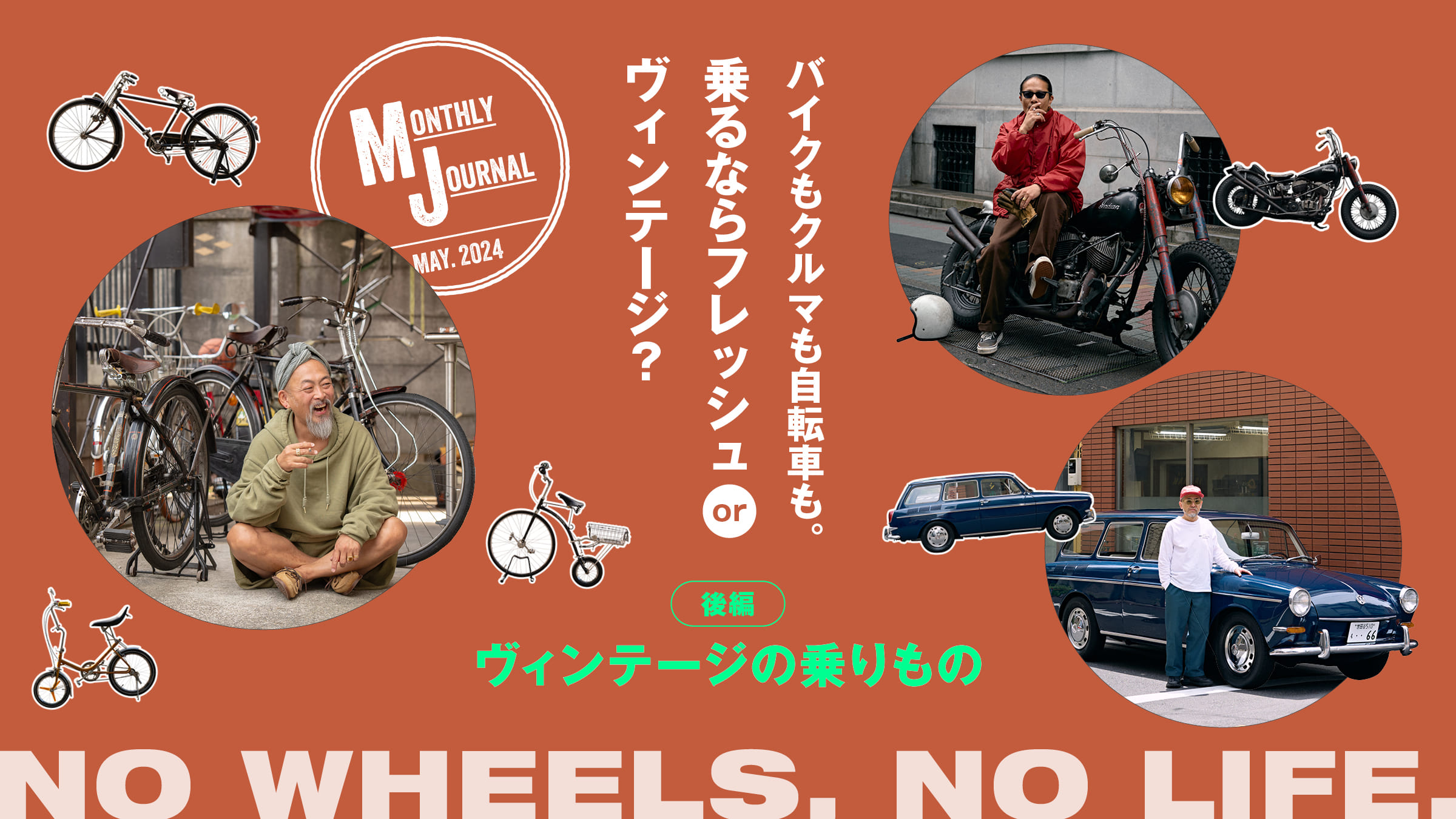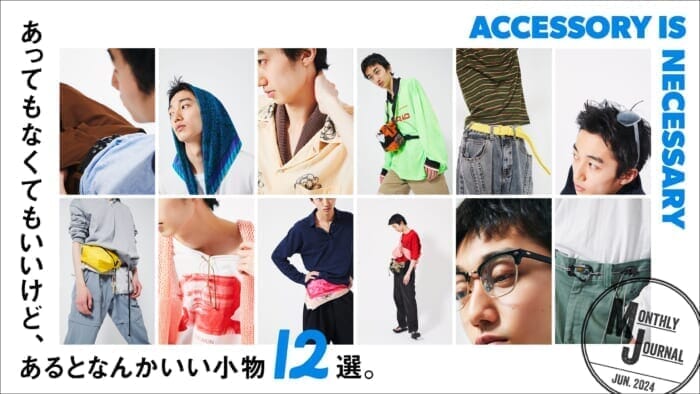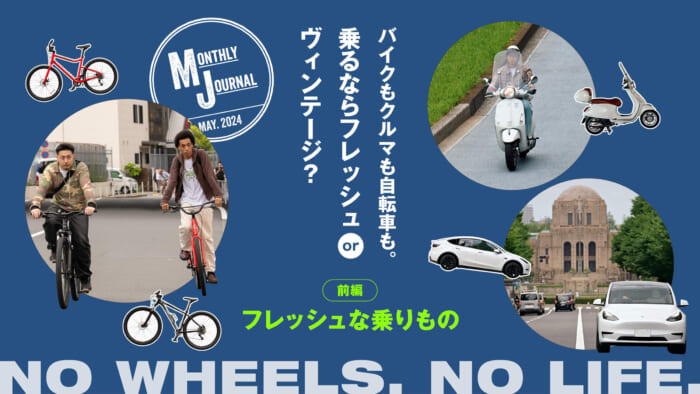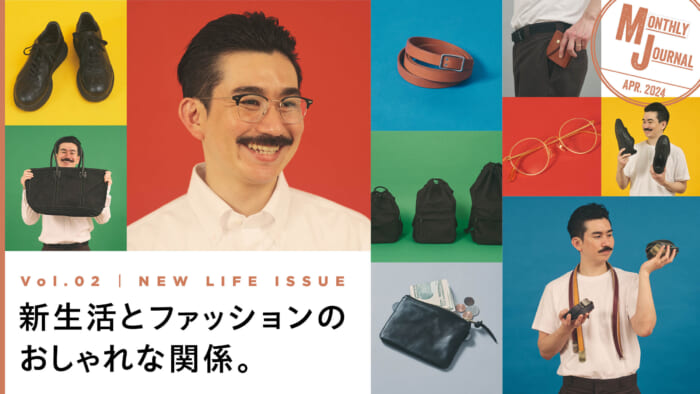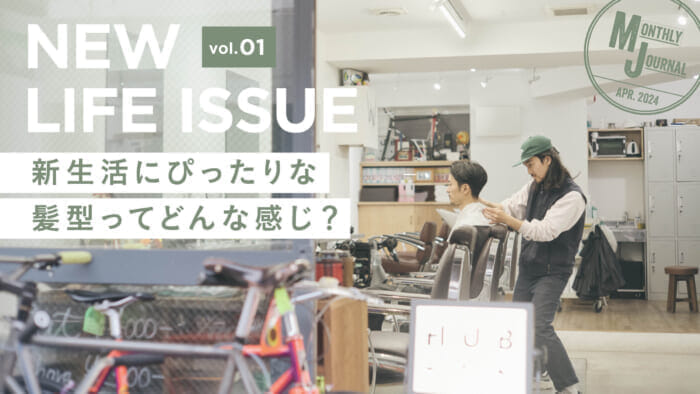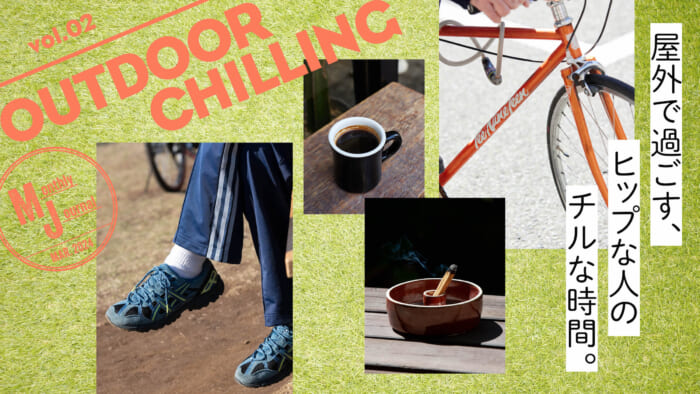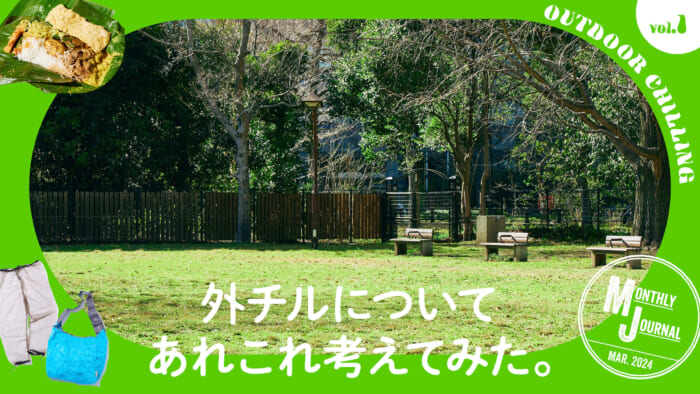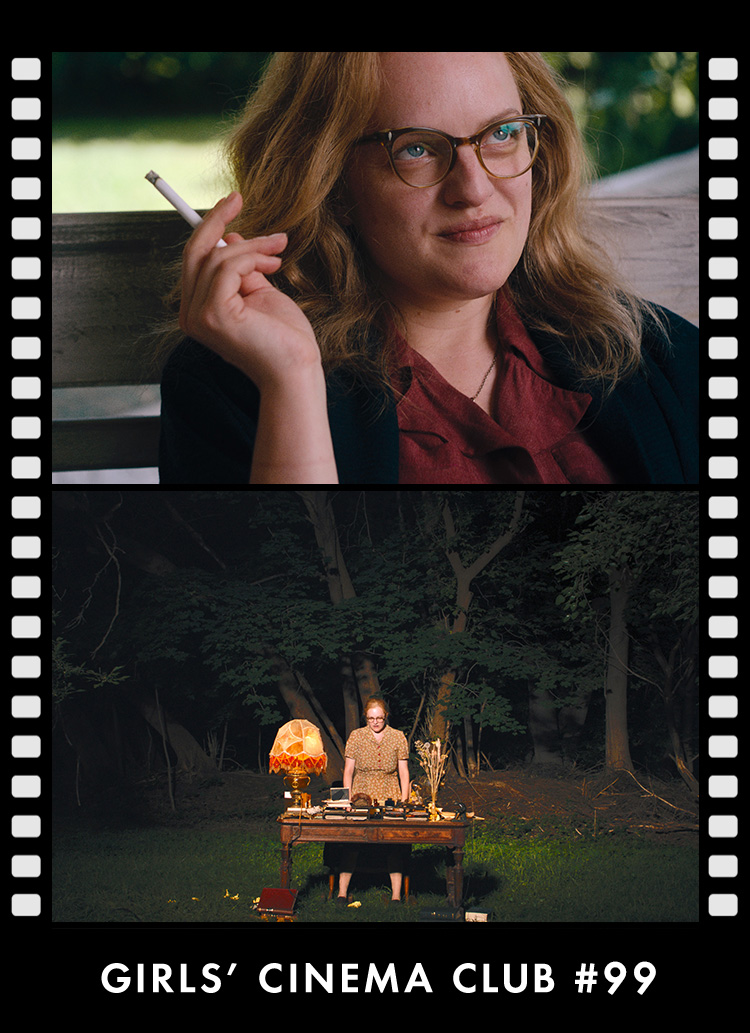Points of Vintage Rides
Good old-fashioned materials and beauty of form
One and only.
I can be a mechanical expert.



Syle 01: Nau Shima with INDIAN 1947 CHIEF Choosing to continue running Tokyo in a 70+ year old Indian.

PROFILE
Founder of TOKYO INDIANS MC® and Timc inc.®. In addition to Indians, he owns a 1968 Chevrolet El Camino. This year, for the first time in six years, he plans to hold an event "IN THE WIND" exclusively for vintage Indians.
Instagram: @tacwp

Have you ever heard the saying "Motorcycle makes a man"? It is an old saying in England that "a motorcycle makes a man. Mr. Shima's 1947 "Chief," which has a displacement of 1,200 cc, was born in the U.S. The sight of him riding freely in the busy Tokyo traffic on his 70-year-old motorcycle naturally brings this British saying to mind.
I got it more than 15 years ago, and the previous owner was from Fukuoka. At first I was driving a 1940 Chief, and then I wanted to drive a 1947 or 1948 Chief, so I searched for one myself (as there are not as many tools to search for them now). Goro Takahashi of goro's had a big influence on me. After I got it, I rode it as a stock bike, then changed it to a bobber, and recently I changed the handlebars and seat to my current style.
It was about 13 years ago that I formed TOKYO INDIANS MC® with my fellow Indian riders, starting with four windbreakers, and together we have been riding around Tokyo, going to the race circuit when our friends enter races, and often going on long runs to Kyushu and Hiroshima. We don't just own vintage Indians, we ride them and keep on driving them. The experiences he has had through the hardships and joys of his life are priceless, and are the very essence of the "motorcycle makes a man" way of life.



The iconic red front fork has been ridden so long that the paint has peeled off, revealing the blue underneath. The "Yellow Eagle Run" sticker on the tank dedicated to the late Goro Takahashi, the leader of Gorlos, and the Rough Riders stickers on the TOKYO INDIANS MC® are a testament to history and pride. The left foot is the clutch, and the gears are shifted by hand back and forth with the gearshift on the left side of the tank.


For the handlebars, Ape hangers were selected for their height and aperture. The reason why he chose these parts based on their own value rather than expensive vintage parts shows a heavenly aesthetic. The seat and pillion pads are by Bates. The rear ribbed fender and the up-sweep muffler are also iconic parts of this bike.

His helmet is an early model "BELL R-T" from 1973, the same year he was born. His gloves are basically soft and tough deerskin, and he uses nothing but tan-colored gloves.
Unlike older models, since the bike is over 70 years old, the answer is no. Temperature and humidity must be taken into account, and the ingrained habits must be understood, like a dialogue between the rider and the bike.
I always start the engine at a place a short distance from my house, but it is uphill from the parking lot to that place, so I always check the electrical system before I start the engine. But one day I didn't check the electrical system, and when I did, it didn't start at all. I thought it was probably the battery, but I had already turned it up, so it took me about an hour of sweaty pushing, even though it was only 60 meters to the parking lot.


TOKYO INDIANS MC® clothing is based on red and black, the formal dress colors of the native American plains tribes, and is a projection of Mr. Shima's creativity. The oil splashed on the back is proof of a biker who keeps on running on the road, and there is no back that fits the phrase "a man loves a man" more.
When I first started riding, there was far less information and far fewer stores that would look at my bikes, so it was a lot of trial and error. That is why the more he learned about Indian, the more he was fascinated by the meticulous attention to detail in its manufacturing, and as he says, "It's not cool to get off the bike just because it's hard, so I'm pretty determined to get this far.
There are many ways of thinking about it, but I think that because it is a vehicle, it has to be ridden. In those days, there were races, or rather, competitions to see who was faster (with other manufacturers), and this was reflected in the business. No matter how hard I tried, my bike was not a bike that could go 180km/h. But it was not the actual number, but the time when I was riding. But I think the important thing is not the actual number, but the speed you feel when you are riding it, the feeling you get."
Style 02:Lambda Takahashi with KYORIN CYCLE The value of Made in Japan that transcends 100 years.

PROFILE
Born in 1977. Studied under stylist Haruhisa Shirayama and became independent in 2008. He has worked on styling for magazines, advertisements, and celebrities. His love of finger skating has grown to the point where he has built a mini skate park in his house.Instagram: @tkhslmd
Last fall, stylist Lambda Takahashi moved her home and studio from Komaba Todaimae to Fuchu. Although it would be more convenient for her to be based in the center of the city due to her profession, she chose to live in the suburbs because of the keyword "bicycle.
One reason was that I was getting tired of the noise in the city center and wanted to live a little more slowly. Another is that I wanted to live in a place where there are many flat roads that are easy to ride a bicycle on. The ups and downs over there (Komaba-Todaimae) are so steep that I don't feel like riding (laughs).

A peek into the garage of his home reveals a whopping 15 of his beloved cars. No wonder bicycles were a deciding factor in the move.
I find a nice bike on Yahoo! Auctions or Trefac, buy it, and repeat. It's the same with clothes, but I like to collect things. I like to look for buried pleasures.
He consults with a local bike store for maintenance and customization of his new bike. On the day of our interview, he was working on a Springer fork that had just arrived, and his eyes were shining. I can't wait to install it!



When we asked Mr. Lambda about one of his favorite bicycles, he told us, as a preface, that his taste in bicycles changed after living in Fuchu.
I like the LA culture, and I used to ride a lowrider bike a lot. I don't really fit in, and this is neither L.A. nor Miami (laughs). (Laughs) I know it's not like I'm supposed to go with the flow, but I like the city I live in, so I wanted to blend in, so I switched to a domestically made bicycle.

The hauler is characterized by its low and long proportions. According to Mr. Lambda, "The body was probably custom-made, so it was cut to fit the position of my uncle, who is about 160 cm. While respecting the style of the period, with its iron rod brakes and full-flat handlebars, he has added modern touches such as a Brooks leather saddle.
That domestic vehicle is a hauler made by the now-defunct manufacturer Kagamiwango-go, which is believed to date from the 1920s and 1930s. This uniquely Japanese bicycle was designed to carry heavy loads, and its heavy, old-fashioned details, such as the iron rod brakes and full-flat handlebars, are impressive. As its appearance suggests, the ride is not exactly light, but because it is a retro-classic one, it seems to harmonize with the slow air of the Fuchu streetscape.
In the past, I used to like fast, smooth-riding cars and bicycles because they gave me more time to do my work. But now, I think it's fine if I can just ride leisurely around town on a bike, and on the contrary, I feel more comfortable on a slower bike. This transporter is like a Japanese version of a beach cruiser for me. It is heavy and has its own quirks, but I can ride it as if I were going for a walk with it. I am often told by the grandparents in my neighborhood, "You ride a nice bike. I guess it must be nostalgic for people around that age.
Kawamura Cycle's Daruma bicycle is iconic for its large front wheel. The classic body is an extension of a unicycle, but by incorporating stainless steel parts and BMX grips, the style is a fusion of analog and high-tech. Incidentally, it is difficult to master, and first-time riders usually end up falling off the bike.
One of the low-rider bicycles he was passionate about before moving to Fuchu was a 1960s-70s Zebra Cycle folding bicycle. The base color is orange, and only the reflectors are red.
After acquiring the "Kagaminego" transport vehicle, he switched his car from a Jaguar XJ to a Nissan one-box. What is the reason why he is so fascinated with made-in-Japan products?
It's the sophistication of the workmanship. For example, if this transporter is well maintained, the screws can be opened and closed very smoothly. It is amazing that something more than 100 years old is still in existence, and it is also amazing to be able to feel the high level of technology. If you say "a 100-year-old Japanese bicycle," I think foreigners would buy it even if it costs a million yen. Like vintage denim. I don't think anyone realizes the value of that yet (laughs).

Syle 03: Nakajyo Tomoaki with VOLKSWAGEN 1966 TYPEⅢ A good old German car with an American air.

PROFILE
At the age of 20, he joined the famous "Kitchen Nankai" in Jimbocho and later became the head chef. Inheriting the history and taste of the main restaurant, which was closed due to the aging of the building, he became independent in 2020 and moved to his current location. He is also a biker who owns three Harley Davidsons.
Instagram: @challenger5599
The most popular old Volkswagen cars in Japan are the Golf and Beetle. The "Type 3" that Mr. Chujo drives was manufactured between 1961 and 1973, and is a rare model that is rarely seen on the streets.
When I was participating in a drag race in Sendai with Dodge's Challenger, I saw a Type 3 on the race track. When I gave up the Challenger to fund the opening of my store, I thought that next time I would like a car that I could drive at a leisurely pace. I looked for a car that met my requirements, such as a 1600cc car without headrests, and I decided on this genuine L633VW Blue color, so I bought this Type 3 three years ago at Tor International.

Thanks to the covered rear engine compartment, the top of it can be utilized as luggage space, which is one of its features.The 1600cc air-cooled engine has been overhauled and the electrical system has been converted from 6V to 12V with the stock twin carburetors. The number on the license plate is the year of the car!
It is hard to believe that the car was manufactured more than 50 years ago, as it has been thoroughly restored down to the last detail with the meticulous work that is typical of "Tor International," a renowned air-cooled Volkswagen dealership. The "Type 3" owned by Mr. Chujo is a two-door wagon "Valiant" model, which was called a "squareback" in the United States, where it was exported. At first, he was thinking of lowering the ride height to give it a California look, but as he rode it, he was attracted by its genuine style. Incidentally, he is a true lover of blue, having owned two Harley-Davidsons and a previously owned "Challenger" that were also blue.
I have been driving it for three years and have had no problems except for a broken wiper. I drive it not only in Tokyo but also in Izu, Nagano, and Chiba. I don't ride during the daytime in the summer because I don't have air conditioning, so I ride only at night (laughs).
In summer in Japan, where extreme heat is becoming the norm rather than a heat wave, many people find it unthinkable to be without air conditioning. Taking this as a positive, and running at night to enjoy the night view and night breeze, it may mean that cars are not just a means to get from point A to point B, but that old cars are also a way to carry romance.




It has a narrow steering wheel not found in the current model, and, unique to this era, no headrests or seatbelts (no legal problem). The gasoline filling port is located on the left side of the open hood, creating a clean visual on the outside of the vehicle. The shift knob was made by a fellow driver of the same "Type 3" and is from "IRON-COFFEE" near his home.




The triangular windows on the sides are an important detail in terms of both design and function. The rear blinker molding and rechromed bumper are also beautiful. The lever under the side brake is red to direct warm air from the engine and white to direct outside air into the car. The windshield wipers have been replaced with dead stock ones from that time.
When we were allowed to take pictures of the car in action, the smooth lane changes and acceleration in a straight line were no problem at all, even in today's traffic conditions. Many people stopped to take pictures and talk to the driver while waiting at traffic lights and in front of the Kitchen Nankai, whether they are familiar with cars or not. The classic visuals of "good old-fashioned craftsmanship" are sure to stimulate the senses of not only the rider, but also those who see them.
I like the beauty of old cars and motorcycles and the feeling of driving and operating them. At a recent meeting in Maki, Japan, where Type 3s were gathered, there were people from Hokkaido and Kyushu, and I have many friends who have come to eat at Kitchen Nankai because they know each other from riding old vehicles. It's very gratifying."






